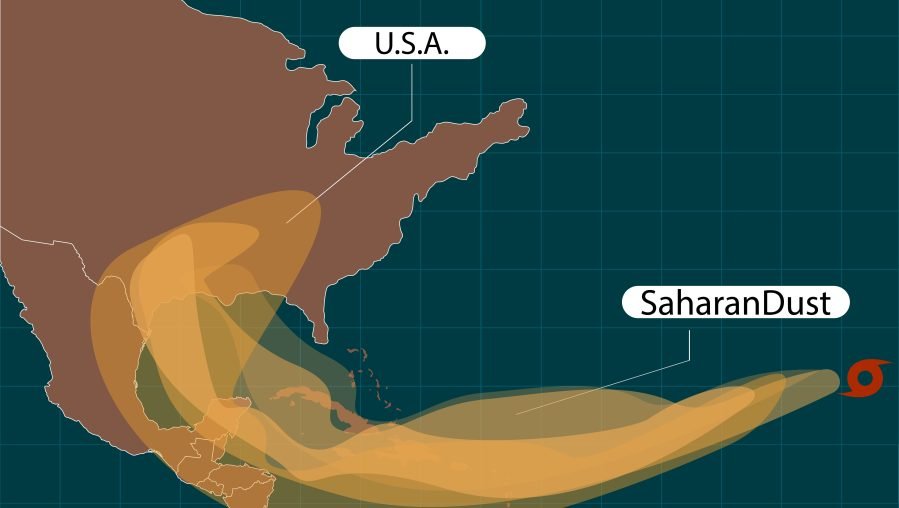AUSTIN (KXAN) – With another plume of Saharan dust arriving in Texas, many will be feeling the effects. Dr. John Villacis, an allergist with St. David’s North Austin Medical Center, joined KXAN Meteorologist Freddy Vela to discuss what symptoms we should look out for and how to get relief.
Read an edited version of the conversation below, or use the video player above to listen.
Freddy Vela: So we know pollen and pollution can trigger allergies, but what exactly is in Saharan dust and what causes people with allergies or asthma to kind of start having problems?
Dr. John Villacis: So every year, around this time of year, we start having symptoms of congestion, drainage, sneezing, and what’s interesting right now is we’re not seeing a lot of allergy in the air.
Right now the pollens are pretty low. It’s too hot. Instead, we see what we call irritants. And irritants are things like cigarette smoke, pollution, pool chemicals, and in this case, Saharan dust, where if the particles are are thick enough in the air, you’re going to have congestion, drainage, sneezing, things that look like allergy, but isn’t 100% an allergy.
Vela: What symptoms should people look out for during a Saharan dust event, especially for those who don’t normally suffer from allergies,
Dr. Villacis: Irritated eyes and nasal passages, runny nose, sneezing, some people get a sore throat, and especially those that are more vulnerable. If they have a background of asthma, for example, or if they have a history of COPD (Chronic Obstructive Pulmonary Disease), they tend to have a lot more respiratory problems during this time.
Vela: So beyond staying indoors, are there other practical ways to reduce exposure, or even to get relief from the from the symptoms.
Dr. Villacis: Well, number one, check your weather reports. The weather reports usually are pretty good about telling us when the Saharan dust is going to be elevated, as well as ozone action days. And then change your filters. If you haven’t changed your filters at home, you may consider getting those stand alone filters as well for your home, making sure that when you’re driving in your car, make sure you recycle the air.
I’m a big fan of the nasal saline spray. So whenever you’re outside, every hour or every half hour, hour, small saline spray couple times a day, is helpful throughout the day to help kind of rinse that stuff out.
